
Few economic sectors have fared well – apparently – during the Covid19 crisis. The media sector is one of them. The need for information has never been more pronounced and the time available so critical. In this in-depth analysis, we propose to go through together the effects of Covid-19 on the different types of media: press, radio, television, internet, out-of-home (OOH), cinema. The advertising sector, which is inseparable from the economic model of the media, is treated in a separate analysis to be published on May 6th, 2020.
For each type of media, we analyse, in the first part, the current effects of Covid on the sector, and then we try to predict the medium-term impact (2020-2021). To carry out this analysis, we interviewed more than 30 specialists (directors, CEO, experts) of the sector in 6 countries. We want to thank them here for their constructive exchanges. Some allowed us to mention their names; others preferred to remain anonymous.
This sector analysis is part of a series of we have devoted to the impact of the coronavirus on different industries :
We’ll keep publishing these thorough analyses on a weekly basis but will reserve some insights to the subscribers of our newsletter.
Summary
- Introduction
- Part 1: The current impact of Covid on media
- Part 2 : The medium-term effects of Covid on media
In a nutshell
- The virus causes changes in behaviour that affect both the business model and the operating model of media and advertising companies. The impacts of Covid on the media are, therefore, multiple.
- Television, radio and the press are experiencing historic audience increases. Historical downward trends are being reversed.
- For broadcasters, replay platforms will become increasingly important. Identification systems (SSO) will become more popular. Transnational alliances will be essential to deal with the streaming sites (Netflix, Disney+) that are emerging increasingly successful as a result of the crisis.
- All media (including Facebook and Google) will be impacted in 2020 by the fall in advertising investments. A return to normal, if it occurs, will not happen before 2021. However, beware of the loss of “share of voice” for the brands that will have been forgotten. The losses for 2020 will range from 10% on an annual basis for TV and radio, to 20% for OOH media.
- The financial health of traditional media (excluding streaming and social media) is under threat. Restructuring plans are being launched, and the reduction of non-essential costs will be applied across the sector. In the private sector, restructuring will be widespread, with judicial reorganisations to be foreseen for smaller entities. For larger groups, some subsidiaries may lose their independence because of the pooling of resources to achieve economies of scale.
- The regional press is threatened with multiple shutdowns. The national titles that went digital early enough could paradoxically emerge from the crisis in 2021 if advertising investment resumes.
- Cinemas will be permanently weakened, with consolidation following the closure of theatres with the least cash (independent theatres).
- Broadcasters will see their IT infrastructure costs explode without any savings being made. Cost reductions will be made on staff, and other technologies deemed non-essential.
- Brand communication will have to be radically different in 2021. Consumers are looking for meaning, so advertising will have to adapt to reassure.
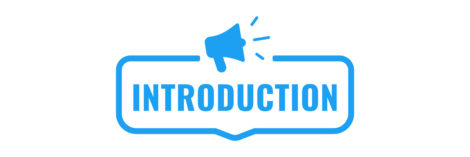
Introduction
This dossier on the impact of the Covid-19 crisis on the media sector has been divided into 2 parts:
- PART 1: an overview of the effects of the crisis for each type of media (online, radio, television, press, OOH media and cinema).
- PART 2: a prospective analysis of the consequences of the Covid-19 crisis on the media in the medium term
In each section, we try to provide an overview of the current impact, but we also look into the future and outline the likely consequences in the short and medium-term.
PART 1: The current effects of the Covid-19 crisis on the different types of media
Television
Renewed interest in linear television
There is a renewed interest in linear television. While the “small window” was thought to be irretrievably losing momentum, the time spent in front of the TV has never been so high: 4.5 hours in France, 3.5 hours in Belgium, 3 hours in the United Kingdom (an increase of 10 minutes or 6.2%). The statistics are conclusive. While linear consumption was only decreasing in the face of the online media’s blows, this drop was not spectacular (see graph 2011-2020 below). In 2020, confinement and the need for information and entertainment will, therefore, lead to an average increase of 10% in the time spent in front of the television.
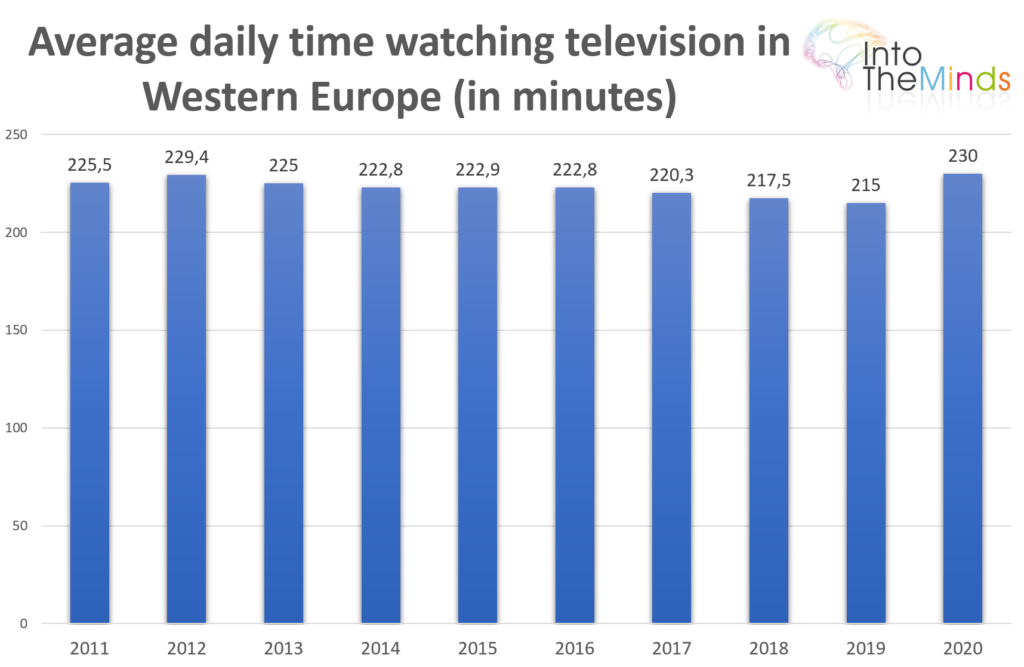
Need for information and content recycling
TV audiences have increased dramatically due to the need for information. To understand this phenomenon, we must remember Maslow’s pyramid. We are currently in a very primary need that concerns the survival of the individual. These needs encourage us to inform ourselves to increase our chances of survival. The news media were, therefore, the first beneficiaries of this legitimate interest, which quickly spilt over into other content. With the help of confinement, it was indeed necessary to keep busy, and audiences for entertainment logically increased. However, the halt in content production (no live shows, more sports, more filming) led the channels to recycle content. ZDF (Germany) has filled its schedule with documentaries, France 2 offers best-of, TF1 has shortened the Koh-Lanta episodes to “hold”, RTBF has put all the Strip Tease episodes online and has pulled out its archives. In short, the old stuff is coming out. The pompom perhaps belongs to ITV (UK) which will replay the 1996 European championship in May, or to RTBF which proposes to review cycling races of the 1990s (example below: Milan-San Remo 1992). Note however that this last example is only available in replay on the online platform.

New formats are appearing
Confinement and social distancing measures have led to the emergence of new television formats. The drastic reduction of live broadcasts, in particular, has led to the integration of consumer technologies (zoom, face-time) into programmes created under new conditions. The MTV show “Game Night with Charlotte Crosby” is broadcast remotely, integrating the communication tools now well known to the general public (see screenshot below). We can also talk about interactive applications allowing the public to interact live. If the latter were already successful in niche applications, we have recently seen the number of projects multiply. One example is the Monterosa solution tested in the Galileo programme on ProSieben (Germany). However, this is unlikely to continue once the crisis is over.

Revamped production techniques
If we follow the different stages of the broadcasters’ value chain (I refer you here to the IABM framework called “The BaM Content Chain“), we can see that the confinement has caused many changes and that has accelerated the digital transition of broadcasters. In production, for example, virtualisation efforts have been immense, as has the deployment of remote access solutions. Editing of video subjects, which for decades had been carried out in the presence of the editor and journalist, now takes place remotely. This is a revolution in the way of working that under normal conditions trade unions would never have allowed. The technical infrastructures had to be updated (doubling the bandwidth to enable both increased consumption of content and remote work on the cloud), multiplication of VPN licences, increase in storage capacity.
Financial health of broadcasters threatened
The Coronavirus crisis has led to a sudden halt in advertising investments, an essential source of revenue for public broadcasters and the only source of financial income for private broadcasters. Their business model is, therefore, being undermined. The situations are contrasted according to the share of advertising in the financing model:
- For public broadcasters such as RTBF (Belgium), which derives 20% of its budget from advertising revenue, we estimate that the loss will be 10% of annual advertising revenue. For RTBF this would represent up to €10m, knowing that the year 2020 was expected to be exceptional because of the Olympic Games and the Euro football tournament. However, this 10% will only represent a limited loss depending on the share of public funding.
- For private broadcasters, the loss of revenue in March/April 2020 sometimes exceeds 50%. Figures are circulating of revenue losses of up to 70% for April 2020. We can, therefore, expect a net decrease, without compensation, of 10% in annual turnover.
Waves of redundancies and cost-cutting measures
The loss of income leads to drastic savings plans. Here are a few examples:
- ITV (United Kingdom): programming budgets cut by £100m
- Channel 4 has implemented a £245m savings programme that includes a 10% reduction in staff and the elimination of programmes.
- M6 (France) is launching a €100m savings plan aimed at reducing costs by 20%. This savings plan will inevitably have an impact on the other entities of the group.
- RTL Belgium: the Belgian channel has already undergone significant restructuring in 2018 with the loss of 88 positions. In April 2020, the channel’s CEO, Philippe Delusinne, called on the public authorities for help in the following terms: “The emergency is absolute and immediate. It is not in four months or six months that it will be necessary to take an interest in us. It is now, in the coming days, that we need to be given tangible signs, to show that people are prepared to help us so that we can continue to exist.”
The urgency is absolute and immediate. You need to show us that you’re willing to help us so that we can survive.
Philippe Delusinne, CEO, RTL Belgium
OTT’s success story
The Coronavirus crisis also marks a turning point for broadcasters’ OTT (Over The Top) platforms. Broadcasters who had opted for single-sign-on (SSO) to guarantee their digital sovereignty are rubbing their hands. The ITV Hub Plus platform (UK) saw its consumption increase by 40%. The advertising-free offer has risen by 80%. RTL Belgium announced with great fanfare that it had exceeded one million people registered on its RTL Play platform. RTBF exceeded 3 million accounts on Auvio. We had already detected Auvio’s growing popularity via Google Trends several weeks ago.
Online media
Streaming sites in excellent shape
Streaming sites are certainly the big winners of the crisis (along with a few others such as gaming players). Netflix saw the number of subscriptions soar by 22.8% in the first quarter. These 17.8 million additional subscribers represent an unexpected and unpredictable windfall (see our projections at the beginning of the year, which expected Netflix’s growth to slow down). For Netflix, the salvation comes in particular from the new markets, the importance of which we emphasise in January 2020. The gain in subscribers has been very high. Another major player, Disney+ has also exceeded all the wildest forecasts. Its launch in the USA in 2019 was undoubtedly spectacular (24 million subscribers in just one month) but now it is plain crazy: Disney+ has reached 50 million subscribers worldwide 2 years ahead of schedule. Disney’s other streaming brand, Hulu (launched in 2013), pales in comparison: only 30 million users. Interestingly, Disney+ is in 1st place ahead of Netflix in some parts of the world. In India, for example, Disney+ attracted 8 million users in 1 month. Barclays now value the Disney brand at $213 billion.
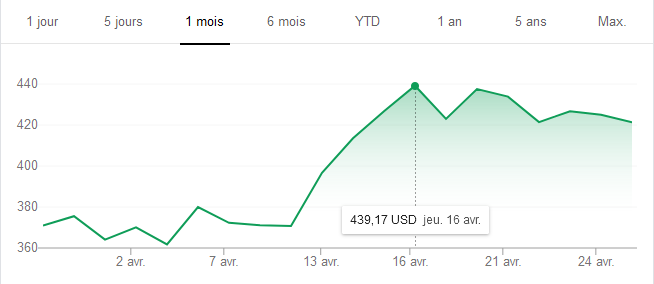
Declining revenues for social media
The drop in advertising investment does not spare social media sites. It is estimated that Facebook and Google could lose more than $44 billion in advertising revenue in 2020 (source: Cowen & Co). Facebook’s advertising revenues for 2020 are expected to reach $67.8 billion, down $15.7 billion, according to the Variety report. As for Google (the No. 1 in online advertising, it should be remembered), its revenues are expected to reach $127.5 billion, a decrease of $28.6 billion.
Radio
Even radio, whose audiences are usually generated by car journeys, is benefiting from the covid-19 crisis. Digital radio audiences in the first weeks of April in France show an impressive increase in the number of listeners (double-digit growth in most cases according to the APCM OJD).
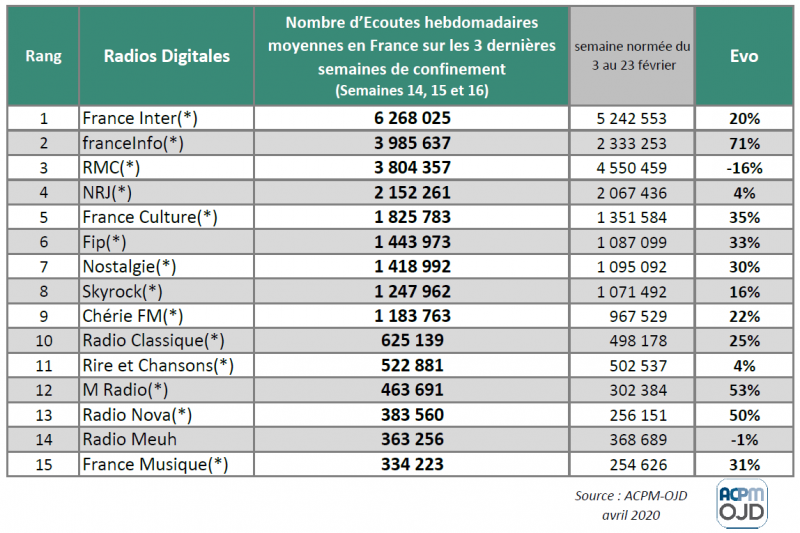
In Germany, the trend is the same with an average increase of 34% in March 2020. In Italy, the online radio aggregator FM World (FMW) also reveals figures which are up by 18.5%. The figures communicated by Bruno Liesse for Belgium (the CIM radio study only appears by periods of 4 months) show an increase of 23%.
In short, as you will have understood, despite the confinement and elimination of car journeys, the increase in radio listening time can be estimated at 20 to 30%. This is again, a spectacular increase. The trend was somewhat stagnant before. A few years ago, I published Norwegian figures which, although lower than the European average (2h22 in 2018), showed the same trend of a slow decline in listening figures. The European Broadcasting Union (EBU) figures are self-explanatory on this point (see below).

The rebound observed during the Covid crisis is all the more exceptional as it is strong. The question remains, of course, how this trend will evolve after the deconfinement
Press
In the press sector, 2 types of newspapers are doing better than others:
- those that had already taken (and succeeded if possible) the digital turn.
- those with a high percentage of subscribers
It is thus the triumph, ahead of its time, of the digital format. The virus has turned consumers away from paper (10% of bookshops are closed). This is having a direct impact in France, for example, Presstalis, which distributes 75% of the press in France, has been in suspension of payments since April 20th. The company is gambling its survival, and an appeal has been made to pool volumes with other messengers.
Revenue decline and saving measures
Overseas, The Guardian expects revenues to fall by £20 million over the next six months. Salary cuts are being implemented in the main editorial offices (Condé Nast, Financial Times, LA Times) as well as temporary unemployment measures (Le Soir in Belgium, for example). In the absence of travel, free newspapers are at a standstill. According to the New York Times, 33,000 news media employees have been affected by the crisis measures in the United States.
Historic readership increase
Yet we’ve never read so much. According to a study by Reworld Media Connect, 30% of the French consume more content on press sites than ever before. The confinement also helps to increase the subscriber base. Unfortunately, few figures are circulating. In Belgium, Bernard Marchand, CEO of the Rossel Group, said he sold 10x more subscriptions to the newspaper Le Soir in March 2020.
Renewed interest in paper ads
And it is this paradox that leads some brands to reinvest in the press. Hugues Rey, the boss of Havas Belgium whom I interviewed on April 28th, saw, the return of certain advertisers who had long since deserted the daily press. International advertisers such as Galbani, BNP, or Carrefour, but also national brands such as Devos Lemmens. Bruno Liesse estimated a 40% increase in advertising revenue for the press in April.
Out-of-home media
The absence of pedestrians due to the confinement has resulted in the cancellation or postponement of all poster campaigns, regardless of format (36m², 4×3, 2m²). Only point-of-purchase advertising is still in operation but represents a marginal share of sales.
The poster business (JC Decaux, Clear Channel) was close to zero throughout the entire confinement period. If hope is revived with the deconfinement, overly aggressive rates are being offered to get the business back on track. For example, JCDecaux is proposing an average discount of 80% to advertisers who sign up for the week of 18 May. To take a concrete example, JCDecaux is offering 4,500 “faces” of its 2m² format (that’ s half of the Belgian market) for €116,000.
Cinema
The film industry is one of the most impacted by the confinement. Cinemas are closed and are not about to reopen. No dates are known.
Movie theatre revenues come from 3 sources:
- ticket sales (50-60%)
- sales in the cinema (drinks, food): 30-40%.
- advertising: less than 10%.
All of these sources of income are currently being eroded.
PART 2: Medium-term effects of the Covid-19 crisis on the media

Television and radio (broadcasting)
A period of cost containment will be in place for the whole of 2020. This cost containment will have an increasingly visible impact on jobs from June onwards. The cost-cutting plans will apply for the whole of 2020. Their lifting in 2021 will depend on the performance of the advertising market. Advertising revenues will be the only variable of adjustment for broadcasters because technological investments will have to be made to cope with the profound behavioural changes generated by the virus. The IABM study shows very clearly that investments in virtualisation and remote production technologies will be on the list in the short term. Trade-offs with other (primarily technological) expenditures will have to be made.
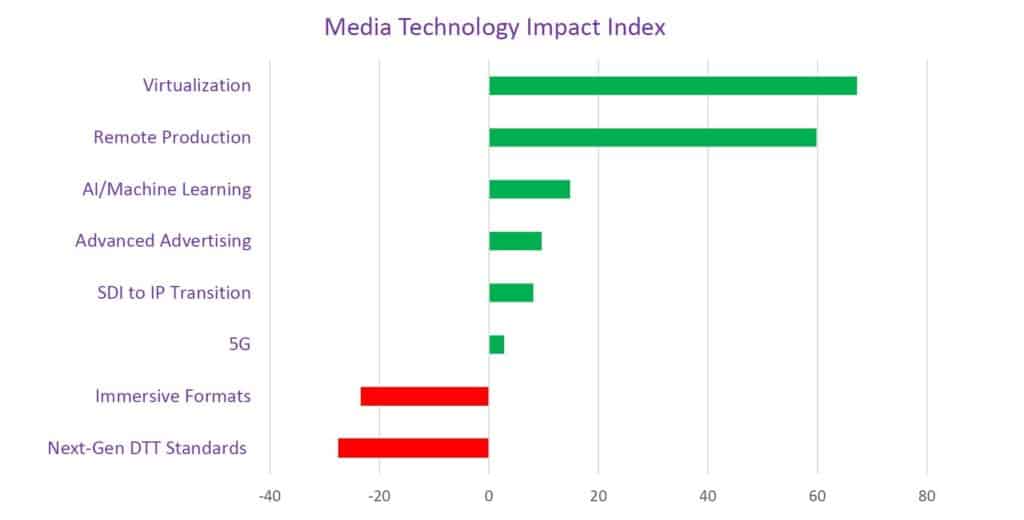
Public broadcasters, whose budgets are tied to tax-funded public endowments (in whole or part), will freeze hiring, forego outside staff, and postpone non-essential technology investments. Even more will be demanded of staff as the workforce will have to be reduced. Labour protests can be expected in 2021.
For private broadcasters, cost-cutting plans will be painful. There will be layoffs throughout 2020, with cost-cutting targets sometimes exceeding 20% for the most financially fragile entities. In groups with foreign subsidiaries, even more, significant reductions in budgets cannot be ruled out with a complete centralisation of infrastructures. The rationalisation of tools could lead to a re-centralisation of processes. Local anchoring could suffer as a result.
Regardless of the status of the broadcaster (public or private), IT infrastructure will become the core priority in 2020-2021. The move to the cloud will generate a lot of hidden costs that will need to be kept under control through capacity management. Broadcasters will become aware (most of them too late) of the importance of Single-Sign-On and the need to know their “customers” by asking them for their data. To be able to combat Netflix and Disney+, who are stronger than ever, the public broadcasters will have no choice but to fight on a level playing field. Content will still be available for free, but only after creating an account. This move towards pre-identification will pave the way for transnational broadcast platforms that can give the game away against Netflix and the like.
Perspectives for online media
In this section, we distinguish two categories of online media: streaming companies on the one hand and social media on the other.
Streaming
The coronavirus crisis will have reshuffled the cards entirely in the streaming sector and in particular the 2020 outlook for Netflix as we published in January 2020. Netflix is a big winner from this crisis and is attracting new subscribers at a surprising speed. We can bet that most of the newly recruited subscribers will be loyal. We expect a churn rate of 5% maximum, driven by a sustainable change in behaviour. The fear generated by the virus, new periods of confinement (cf. the Harvard study we mentioned in our other prospective analysis), as well as a more systematic use of home-working, will help to make the home a more important place than ever. In geographical terms, analysts agree that:
- India will come in 3rd position among the countries with the most SVOD subscribers. No less than 95 million subscribers are expected in 2023, according to Futuresource.
- The Middle East and North Africa will generate $2.97 billion in revenues by 2025 (source: Digital TV Research). Netflix is expected to lead the way with a 38% market share, followed by StarzPlay (23%) and Disney Plus (11%).
- Latin America will see its market decline with a balance of -5 million subscribers due to the recession. It is expected to reach 67 million subscribers instead of 75 million in 2017. Brazil has already lost 3 million subscribers between 2015 and 2019.
Social Media
According to Variety’s research, Facebook’s advertising activity is expected to pick up in 2021. It has already been stabilised in April 2020 compared to the same period one year earlier. The projections anticipate a 23% growth and a turnover of 83 billion dollars. Also, social media should continue to be used more and more by young people to keep informed. A study shows that in Australia, the Covid crisis and the hunt for Fake News have not deterred Generation Z from using social media to get informed, at 59%.
The medium-term outlook for the press sector
The press was in pretty bad shape before the coronavirus. The crisis will undoubtedly be fatal to those who did not take the digital turn soon enough. The regional dailies are among those, and we could, therefore, see the discontinuation of specific titles over the next 12 months. The slaughter has already begun. In France, for example, the daily Paris-Normandie has gone out of business. So, the market is set to consolidate, paving the way for possible low-cost buyouts by regional customers.
But for titles that had taken the digital turn and pushed digital subscriptions, the crisis could become a transformation accelerator. On the one hand, the “paper” readership will convert more quickly to the digital version. On the other hand, the new 100% digital subscribers will have been won (100% gross margin since the marginal cost of production and delivery is zero). If advertising investments return to their pre-crisis level, Covid-19 could paradoxically be a profitability lever from 2021 onwards. However, everything will depend on the ability of daily newspapers to build customer loyalty. This is a real challenge in times of economic crisis. The recession will indeed force consumers to make trade-offs in terms of spending.
Evolution of the OOH media industry in the medium term
In the medium term, the hope of the OOH industry is, of course, that life will return to the way it was before. “Outdoor advertising is life,” says Veerle Colin, Marketing Director of JCDecaux Belgium. Outdoor advertising lives from movement in the city, and a functioning poster market is synonymous with life.
While the decline in television and radio advertising revenues is estimated at 10% for the year as a whole, the decline in the out-of-home advertising sector is likely to be around 20%. The reason for this is the almost non-existent revenues during the containment phase. A return to normal market conditions is expected this summer. In the absence of holidays, we can expect higher traffic, but what will happen to prices? Generally speaking, billposting in the summer period is cheaper. Will the presence of more potential consumers this summer contribute to higher prices? Or will advertisers be forced by budget restrictions to ask for discounts? At this point, it is still too early to say.
What is clear, however, is that 2021 will be a year of budgetary pressure, with advertisers demanding even more precise figures on their “audience”. Averages will no longer suffice. Also, external devices will have to be used to measure flows. The technique of Wi-Fi sensors (already used indoors in shopping malls) should make good progress.
The out-of-home advertising sector will shrink by 20% in 2020.
Evolution of the cinema sector in the medium term
The film industry will not emerge unscathed from this crisis. Independent theaters, already fragile, will not recover. A wave of closures will result from the convergence of 2 aspects:
- their insufficient cash-flow
- lack of economies of scale as in large multiplexes
For large groups (which have multiplexes), cash flow will be sufficient to hold. But all eyes will be on the 4th quarter of 2020. It is indeed the months of October/November/December that will allow them to gather the best entries and consolidate their cash flow. If the social distancing measures are still in place at that time, profitability is likely to be sharply down. Indeed, a drop in attendance will impact the three primary sources of theatrical revenues:
- Ticket sales (50-60% of revenues) will be lower.
- the sales in halls (drinks, food) will be lower
- advertisers will less value advertising because the target groups (young people, families) will be less present
Beyond the cinemas, it is also the whole film industry that suffers. Shooting has stopped, and one wonders how the “blockbusters” (the dominant model in the sector) will find their way back into the theatres. Will this model, in which huge budgets are invested, be called into question, at least temporarily?
In the longer term, the need to see a film is not threatened. Indeed, human beings will still need to escape, to immerse themselves. But cinemas will have to reinvent themselves in one way or another to approach the post-Covid era with serenity.
Illustrations : shutterstock
Posted in Marketing.






